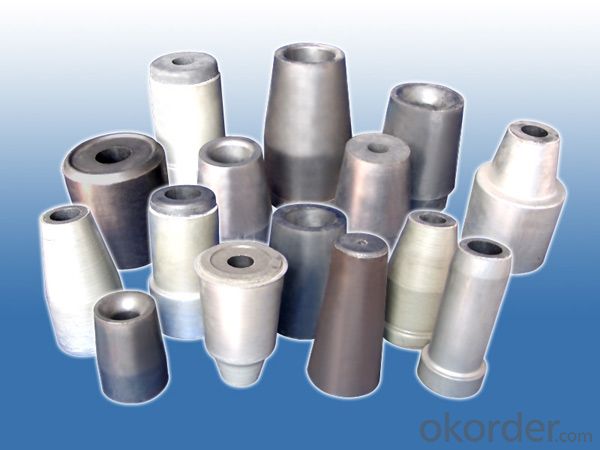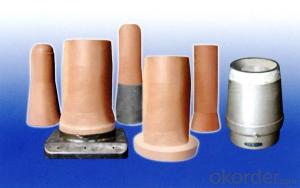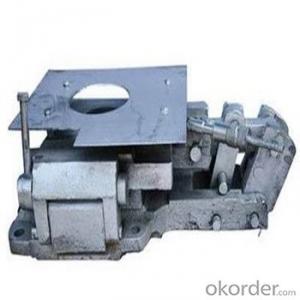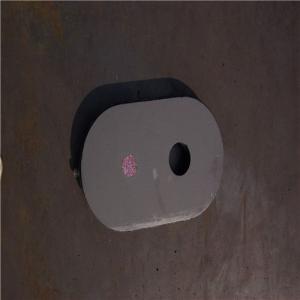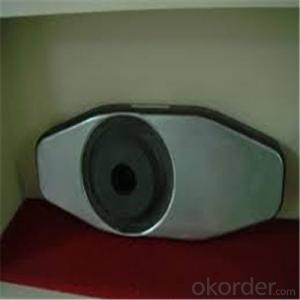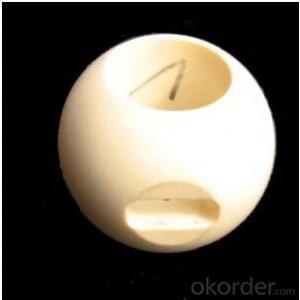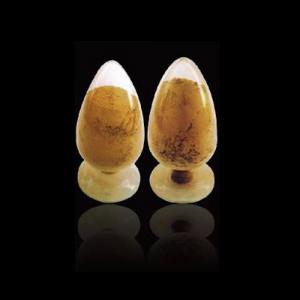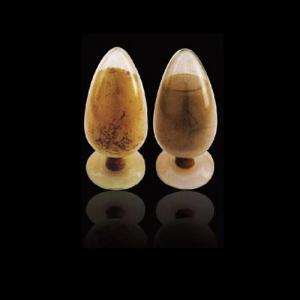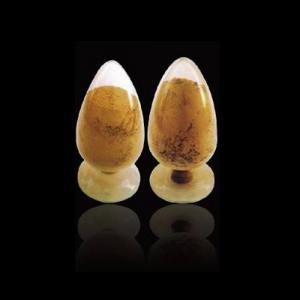Monolithic Refractories Upper & Lower Nozzles for Ladle in Iron and Steel Industry
- Loading Port:
- Shanghai
- Payment Terms:
- TT OR LC
- Min Order Qty:
- 10 set
- Supply Capability:
- 50000 set/month
OKorder Service Pledge
OKorder Financial Service
You Might Also Like
Product Description:
1)High Temperature Burnt Slide Plate
This product adopts tabular alumina, carbonaceous material and zirconia-containing material as main raw materials, adds in high performance antioxidants, uses phenolic resin as binder, formed under high-pressure and burned under high temperature. Mainly used in large and medium-sized ladle.
Physical and chemical properties:
Chemical and Physical Properties | Al-C Slide Gate Plate | Al-Zr-C Slide Gate Plate | ||||||
LQSP-70 | LQSP -75 | LQSP -80 | LQSP -85 | LQSP -86 | LQSP -70 | LQHSP-75 | LQHSP -77 | |
Al2O3,% | 70 | 75 | 80 | 85 | 86 | 70 | 75 | 77 |
C,% | 7 | 7 | 5 | 5 | 4 | 7 | 7 | 7 |
ZrO2,% | - | - | - | - | - | 6 | 6 | 2.5 |
A.P.,% max | 10 | 10 | 10 | 10 | 7 | 10 | 10 | 10 |
B.D.,g/cm3 | 2.8 | 2.9 | 2.9 | 3.0 | 2.95 | 3.00 | 3.05 | 2.90 |
C.C.S., MPa min | 65 | 70 | 100 | 100 | 100 | 110 | 115 | 100 |
2) Low Temperature Burnt Slide Plate
Tabular alumina, zirconia-containing material and spinel as major raw materials, adding in special metal, using phenolic resin as binder, being burned under low temperature during producing process. Mainly used in small and medium-sized ladles.
Physical and chemical properties:
Chemical and Physical Properties | Low Temperature Burnt Slide Gate Plate | ||||
LQLTSP-70 | LQLTSP-75 | LQLTSP-80 | LQLTSP-85 | LQLTSP-86 | |
Al2O3,% min | 70 | 75 | 80 | 85 | 86 |
C,% | ≥5 | ≥5 | ≥5 | ≥4 | 4 |
A.P.,% max | 10 | 10 | 10 | 8 | 7 |
B.D.,g/cm | 2.9 | 2.95 | 3.00 | 3.10 | 2.95 |
C.C.S., MPa ≥ | 90 | 90 | 100 | 120 | 100 |
3) Unburned Slide Plate
Without being burned, tar impregnated and distilled, simple processing. Mainly used in small and medium-sized ladles.
Physical and chemical properties:
Chemical and Physical Properties | Al-C Slide Gate Plate | ||||
LQUSP-70 | LQUSP-75 | LQUSP-80 | LQUSP-85 | LQUSP-86 | |
Al2O3,% | 70 | 75 | 80 | 85 | 86 |
C,% | 7 | 7 | 5 | 5 | 4 |
A.P.,% max | 10 | 10 | 8 | 10 | 7 |
B.D. g/cm3 min | 2.8 | 2.9 | 3.0 | 3.0 | 2.95 |
C.C.S., MPa min | 65 | 70 | 100 | 100 | 100 |
- Q: How are monolithic refractories recycled or disposed of at the end of their lifespan?
- Monolithic refractories, which are commonly used in high-temperature industrial applications, can be recycled or disposed of at the end of their lifespan through several methods. The chosen method depends on the specific type of monolithic refractory and its composition. One common approach to recycling monolithic refractories is through a process known as reclamation. Reclamation involves collecting used refractory materials and processing them to remove any impurities or contaminants. The reclaimed refractory material can then be crushed, ground, or milled to produce a fine powder that can be used as a raw material in the production of new refractories. Another method of recycling monolithic refractories is through thermal treatment. This involves subjecting the used refractory material to high temperatures in a controlled environment, such as a kiln or furnace. The heat helps to break down the refractory material, removing any binders or impurities. The resulting material can then be reused as a raw material or incorporated into other applications, such as aggregates for construction. In cases where recycling is not feasible, monolithic refractories can be disposed of in specialized facilities designed for handling and treating hazardous waste. These facilities ensure that the refractory material is properly contained and treated to minimize any potential environmental impact. This disposal method is typically used for refractories that contain hazardous substances or cannot be recycled due to their composition. It is important to note that the proper disposal or recycling method for monolithic refractories should comply with local regulations and guidelines. These regulations aim to ensure the safe handling, treatment, and disposal of these materials, taking into consideration their potential environmental and health impacts. Therefore, it is crucial for industries and businesses to work closely with waste management professionals and follow the appropriate procedures to responsibly manage monolithic refractories at the end of their lifespan.
- Q: How are monolithic refractories used in the repair and maintenance of ladles and tundishes?
- The steel industry extensively utilizes monolithic refractories for the repair and maintenance of ladles and tundishes. These refractories are specifically designed to endure the extreme conditions encountered during the steelmaking process, including high temperatures, thermal shock, and chemical erosion. In the case of ladle repair, monolithic refractories are employed to line the inner walls. Ladles are exposed to intense heat and corrosive molten metal, and the refractory lining serves as insulation and protection against these harsh circumstances. Additionally, the lining helps to maintain the desired temperature of the molten metal, ensuring it remains in an appropriate state for processing. Regarding tundishes, monolithic refractories are used to line the bottom, sides, nozzle, and impact pad. Tundishes are responsible for distributing molten metal to multiple casting molds and are subject to high temperatures and thermal shocks. The refractory lining helps to sustain the necessary temperature and prevent any leakage of molten metal. During the repair and maintenance process, monolithic refractories are applied as dense, high-strength materials that are easy to shape and install. They can be formed into various shapes, such as bricks, castables, and gunning mixes, depending on the specific requirements of the ladle or tundish. These refractories are frequently applied using specialized techniques, such as gunning or casting, to ensure proper adhesion and durability. In addition to their thermal and chemical resistance properties, monolithic refractories also possess excellent mechanical strength and resistance to abrasion. This is particularly crucial in ladles and tundishes, as they experience constant wear and tear from the movement of molten metal and the handling of refractory materials during repair and maintenance. Overall, monolithic refractories play a vital role in the repair and maintenance of ladles and tundishes in the steel industry. They provide the necessary insulation, protection, and durability required to withstand the demanding conditions of steelmaking.
- Q: How do monolithic refractories improve the efficiency of ladle and tundish preheating furnaces?
- Monolithic refractories greatly contribute to the efficiency of ladle and tundish preheating furnaces. These refractories, made from a single material, are easily installed, repaired, and replaced, making them versatile and cost-effective. The efficiency of these furnaces is improved thanks to the outstanding thermal insulation properties of monolithic refractories. With low thermal conductivity, they effectively retain heat and prevent its escape. This insulation capability ensures an efficient preheating process, reducing energy consumption and costs by minimizing heat loss. Additionally, monolithic refractories possess high thermal shock resistance, which is crucial in ladle and tundish preheating furnaces. These furnaces experience rapid temperature changes during the pouring of molten metal, which can lead to cracking or failure of traditional refractories. However, monolithic refractories are specifically designed to withstand thermal shock, remaining intact and maintaining their insulating properties even in extreme conditions. This durability reduces downtime and maintenance requirements, thus enhancing overall efficiency. Furthermore, monolithic refractories provide a seamless and uniform lining surface, improving heat transfer within the furnace. The absence of joints or seams reduces the risk of heat leakage and ensures even distribution of heat throughout the lining. This promotes uniform heating of the ladle or tundish, allowing for more efficient preheating and better temperature control. In conclusion, the use of monolithic refractories in ladle and tundish preheating furnaces results in improved efficiency due to their exceptional thermal insulation properties, high thermal shock resistance, and ability to provide a seamless and uniform lining. These refractories minimize heat loss, reduce energy consumption, and enhance the overall performance of the preheating process.
- Q: How can the lifespan of monolithic refractories be extended?
- There are several measures that can be taken to extend the lifespan of monolithic refractories. To begin with, it is essential to ensure their proper installation. This involves following the guidelines provided by the manufacturer, using appropriate equipment and techniques, and ensuring correct curing and drying processes. By installing them correctly, the monolithic refractories become better equipped to withstand thermal stresses and chemical attacks, thus prolonging their lifespan. Regular maintenance is also crucial in extending the lifespan of monolithic refractories. This includes conducting routine inspections to identify any signs of wear, erosion, or cracking. Timely repairs or replacements should be carried out to prevent further damage. Moreover, applying protective coatings or sealants can help reduce erosion and chemical attacks, thereby enhancing the refractories' longevity. Another important aspect is implementing effective operating practices. This involves maintaining optimal operating conditions, such as controlling temperature fluctuations, to minimize thermal shocks and reduce the risk of spalling or cracking. Proper material selection is also key, as using refractories specifically designed for the intended application can increase their resistance to chemical attacks and extend their lifespan. Furthermore, ensuring proper handling and storage of monolithic refractories is essential. They should be stored in a dry, clean environment, away from moisture and extreme temperatures, to prevent premature degradation. Careful handling should be exercised, avoiding excessive impact or rough treatment that could cause damage. Lastly, it is beneficial to seek guidance from experienced professionals or consult refractory suppliers. Their expertise can provide valuable insights and guidance on best practices for extending the lifespan of monolithic refractories. By making informed decisions regarding installation, maintenance, and operating practices, the refractories' lifespan can be maximized and their performance optimized.
- Q: How do monolithic refractories withstand the thermal cycling in coke oven applications?
- Monolithic refractories are specifically designed to withstand the harsh conditions of thermal cycling in coke oven applications. Thermal cycling refers to the repetitive heating and cooling cycles that occur in these high-temperature environments. One of the key factors that enables monolithic refractories to withstand thermal cycling is their composition. They are typically made from a combination of different refractory materials, such as high-alumina, silica, and magnesia, which provide excellent thermal shock resistance. These materials have low thermal conductivity and high thermal expansion properties, allowing them to expand and contract without cracking or spalling under extreme temperature changes. Moreover, monolithic refractories have excellent bonding and adhesion properties, allowing them to form a strong and cohesive structure. This ensures that they can withstand the mechanical stresses caused by the thermal cycling process. Additionally, monolithic refractories can be installed in place through various techniques, such as gunning, casting, or ramming, which further enhances their resistance to thermal cycling. Furthermore, the presence of specialized additives and bonding agents in monolithic refractories improves their resistance to thermal cycling. These additives can enhance the refractory's ability to absorb thermal shock and minimize cracking, thus increasing its durability and longevity in coke oven applications. Overall, monolithic refractories' ability to withstand thermal cycling in coke oven applications can be attributed to their carefully formulated composition, strong bonding properties, and the incorporation of specialized additives. These characteristics make them highly reliable and suitable for the extreme temperature fluctuations experienced in coke oven operations.
- Q: How do monolithic refractories resist chemical attacks from molten metals and slag?
- Monolithic refractories resist chemical attacks from molten metals and slag due to their high chemical stability, which is achieved through the use of carefully selected raw materials and advanced manufacturing processes. These refractories are designed to have low porosity, which prevents the penetration of molten metals and slag into the material. Additionally, they possess high resistance to corrosion and erosion, even at high temperatures, allowing them to withstand the harsh chemical environments created by molten metals and slag.
- Q: What are the common failure mechanisms of monolithic refractories?
- Some common failure mechanisms of monolithic refractories include thermal shock, spalling, erosion, chemical attack, and mechanical stress. These factors can weaken the refractory material, causing it to crack, break, or deteriorate over time.
- Q: What are the key considerations when selecting monolithic refractories for tundish applications?
- When selecting monolithic refractories for tundish applications, there are several key considerations that should be taken into account. First and foremost, the refractory material must have excellent thermal shock resistance. Tundishes are subjected to extreme temperature fluctuations, as molten metal is poured into them and then drained out. A refractory material with poor thermal shock resistance will quickly degrade and fail under these conditions, leading to costly repairs and downtime. Another important consideration is the refractory's resistance to chemical attack. Tundishes are often exposed to aggressive chemical environments, as they come into contact with molten metal and various slag compositions. The refractory material must be able to withstand these corrosive elements and maintain its integrity over time. Additionally, the refractory's mechanical strength is crucial. Tundishes are subject to physical stresses, such as the weight of the molten metal and the movement of the tundish itself. A weak refractory material will be prone to cracking and failure, jeopardizing the overall performance and longevity of the tundish. The ease of installation and repair should also be considered. Monolithic refractories are typically cast or gunned in place, so it is important to select a material that can be easily applied and shaped to fit the tundish design. Similarly, if repairs are necessary, the refractory material should be capable of being patched or replaced without significant disruption to operations. Finally, cost is always a consideration. While it is important to select a high-quality refractory material that meets the specific requirements of the tundish, it is also necessary to consider the overall cost-effectiveness. This includes the initial material cost, installation and repair expenses, and the expected lifespan of the refractory. In summary, the key considerations when selecting monolithic refractories for tundish applications include thermal shock resistance, chemical resistance, mechanical strength, ease of installation and repair, and cost-effectiveness. By carefully evaluating these factors, one can choose a refractory material that will provide optimal performance and durability in tundish applications.
- Q: Can monolithic refractories be used for the lining of blast furnace runners and troughs?
- Yes, blast furnace runners and troughs can have their lining done with monolithic refractories. Monolithic refractories, unlike traditional refractory bricks that are made by assembling individual units, are composed of a single, homogeneous structure. There are several advantages to using monolithic refractories for lining blast furnace runners and troughs. Firstly, they exhibit excellent thermal shock resistance, which is vital in this application given the extreme temperature fluctuations the lining is exposed to. Additionally, monolithic refractories have a good resistance to chemical attack from the molten metal and slag, which helps prolong the lining's lifespan in the harsh working environment of blast furnaces. Moreover, monolithic refractories can be easily installed in intricate shapes and structures, allowing for greater flexibility in designing the lining of blast furnace runners and troughs. This ease of installation also results in reduced downtime during maintenance and repair, as monolithic refractories can be applied quickly and efficiently. To summarize, monolithic refractories are a suitable option for lining blast furnace runners and troughs due to their thermal shock resistance, chemical resistance, and easy installation. Their use can contribute to improving the longevity and performance of these critical components in blast furnace operations.
- Q: How do monolithic refractories perform in torpedo ladle applications?
- Monolithic refractories perform exceptionally well in torpedo ladle applications due to their high thermal shock resistance, excellent erosion and corrosion resistance, and superior mechanical strength. They can withstand the extreme temperatures and aggressive molten metal environment inside the torpedo ladle, ensuring long-lasting and reliable performance. Additionally, monolithic refractories offer ease of installation and maintenance, making them a preferred choice in torpedo ladle applications.
Send your message to us
Monolithic Refractories Upper & Lower Nozzles for Ladle in Iron and Steel Industry
- Loading Port:
- Shanghai
- Payment Terms:
- TT OR LC
- Min Order Qty:
- 10 set
- Supply Capability:
- 50000 set/month
OKorder Service Pledge
OKorder Financial Service
Similar products
Hot products
Hot Searches
Related keywords


